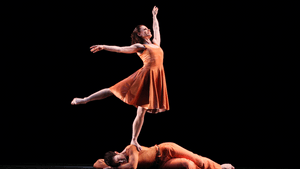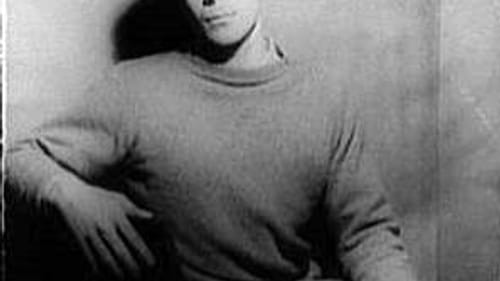Stay in the Loop
BSR publishes on a weekly schedule, with an email newsletter every Wednesday and Thursday morning. There’s no paywall, and subscribing is always free.
Three classics of dance
NextMove Dance presents Paul Taylor Dance Company

The Paul Taylor Dance Company has been a regular visitor to Philadelphia. Now, NextMove invites us to explore the history of this giant of modern dance with Taylor's masterworks Arden Court, Company B, and Esplanade. In the three pieces, Taylor brings to life the history of modern dance itself.
In 2016 I reviewed NextMove’s presentation of the Martha Graham Dance Company and Parsons Dance. Paul Taylor Dance Company is the link that connects them. Taylor created his own company in the 1950s, while still dancing for Graham. Later, in his own company, he choreographed the male solo in Arden Court for David Parsons. In these direct links, the legacy of the great founders of modern dance lives on.
Dance of the fairies
In Shakespeare’s As You Like It, the mischievous and powerful fairies hold court in Arden Forest. Taylor’s 1981 Arden Court opened with a backdrop of a single rose, reminding us of fairies in our own gardens, while the precise and spritely music, from the symphonies (Nos. 1, 3, 5, 7, and 8) of Baroque composer William Boyce, set the piece firmly in the never-when of fairyland. Costumes by Gene Moore, who also designed the setting, completed the fantasy.
The dance opened with six men, bare-chested and in tights splashed with color like the petals of flowers, flinging themselves with abandon and leaping in displays of strength and power. In a sequence of pas de deux that followed, women in short fluttery dresses with the same splashy color circled and darted like fairies, flirting and teasing.
In one pairing, Eran Bugge stepped all over Sean Pooz and curled up on his back while he balanced her leaning forward on one leg. In another, George Smallwood and Alex Clayton vied in a humorous challenge duet.
War, at home and abroad
Paul Taylor choreographed Company B in 1991, but it felt like an earlier piece. The program notes said, “The songs [sung by the Andrews Sisters] express typical sentiments of Americans during World War II.” The dancing, based to a great extent on swing, polka, and the swagger of soldiers in town or zoot-suiters on the make, was uniformly excellent.
{photo_2}
For the men, Santo Loquasto designed loose trousers in khaki and blue over-buttoned shirts with short sleeves. The women wore skirts and blouses in khaki or pastels paired with ankle socks. The dance in the foreground stayed mostly light and upbeat, while in the background men marched in silhouette or posed as if caught in the moment of combat. Robert Kleindorst’s “Boogie-Woogie Bugle Boy” was a joyous highlight. However, “Rum and Coca-Cola” was a strong contender in a dance that conveyed, to an ironically upbeat song, the lives of working island women who entertained soldiers on shore leave.
One could not fault the dancers or the dance, but as the program notes hinted, the story has lost much of the emotional hold it would have had on an audience even 25 years ago. Audiences have grown weary in a time of endless wars waged almost out of sight; we no longer recognize the world of Company B.
A Walk in the sunshine
Esplanade (which refers to a wide walkway, usually by the seaside) was easily my favorite. Choreographed in 1975 to Bach’s Violin Concerto in E Major and Double Concerto for Two Violins in D Major, it was the oldest piece of the night but felt newest and freshest. John Rawlings’s costumes — knee-length dresses for the women and slacks and short-sleeved mesh tees for the men, all in shades of orange and peach except for a punch of lilac — provided the sunshine.

With movements based on the natural activity of passersby strolling or romping on the esplanade, the dancers ran and leaped — often over other dancers — in joyously off-kilter movement that seemed always on the verge of disaster, yet in control. In separate dances marked by brief darkening of the stage, Taylor offered a quadrille perfectly suited to the mathematic clarity of the Baroque music.
In a complete change of mood, dancers crept painfully across the stage to the mournful Largo from the Double Concerto. My notes describe this moment as “agony.” But Michelle Fleet shone throughout, threading between the dancers, jumping over them, and letting the action happen around her with a sly smile.
What history do we see?
Given that the company offered these three pieces as masterworks in a history that touches the beginning of modern dance, what connects them to Graham’s legacy? In Esplanade, we can see the striking movements of contraction that explode outward in vibrant energy, the sharply angled feet and arms, a back curved over the midriff as if in pain. The influence seems to become less overt over time, and Taylor always leavens the technique with his own swagger, but you can see the history and its growth in the pieces on display.
What, When, Where
Paul Taylor Dance Company. Choreography by Paul Taylor. NextMove Dance. November 2-5, 2017, at the Prince Theater, 1412 Chestnut Street, Philadelphia. (215) 422-4580 or nextmovedance.org.
Sign up for our newsletter
All of the week's new articles, all in one place. Sign up for the free weekly BSR newsletters, and don't miss a conversation.

 Camille Bacon-Smith
Camille Bacon-Smith